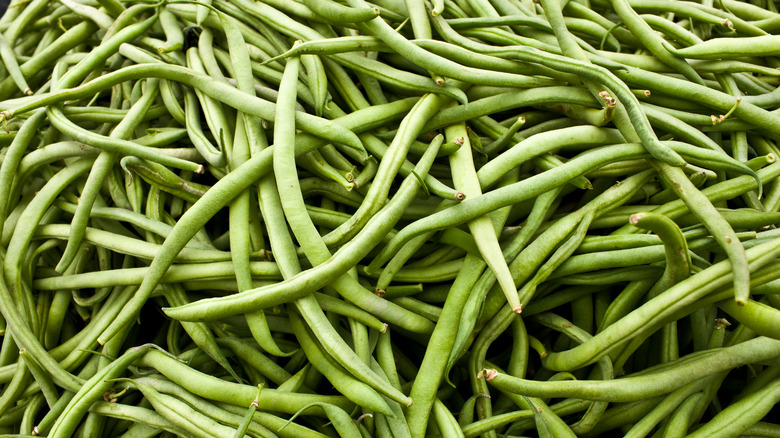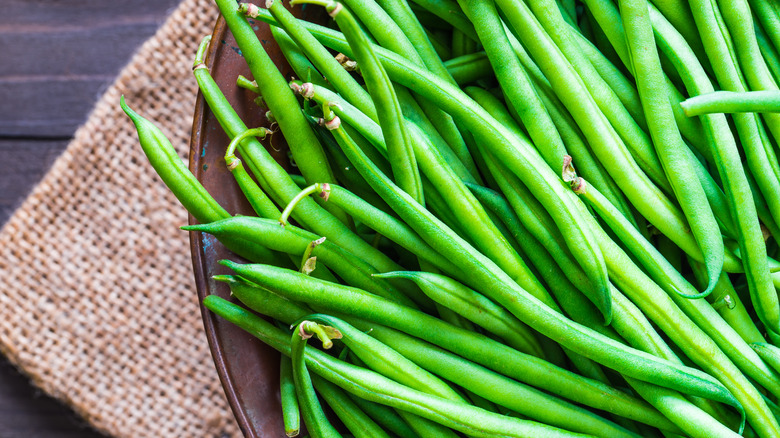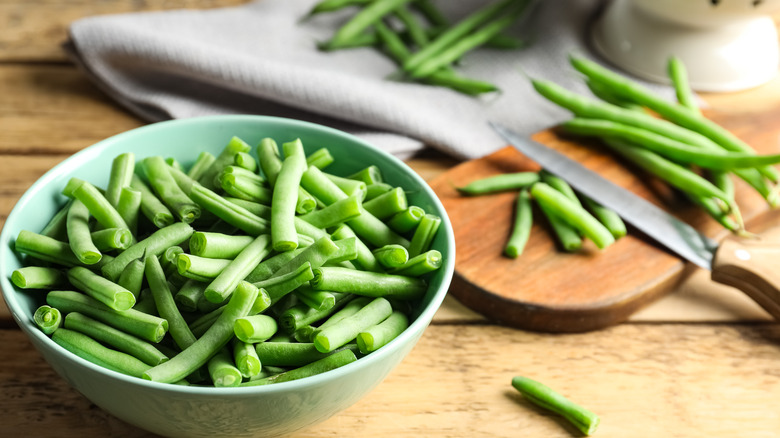Are Haricots Verts Any Different From Regular Green Beans?
There are plenty of moments in adult life where one might long for childhood. Grown-up life is peppered with bills and responsibilities, not enough sleep, and the carefree afternoons of youth are replaced with 3 p.m. lattes just to make it until dinner. There is, however, one magical thing that happens as you make your way into adulthood, and that is an appreciation for vegetables. The days of being grossed out by green things on your plate are in your rearview mirror, baby! It feels good, doesn't it?
Green beans are one of those foods that a kid will turn their nose up at, but as an adult, snapping the ends off, rinsing them and preparing to sauté, blanch or roast them has an air of sophistication to it. When you encounter green beans at the market, you might be curious to know if there's a difference between green beans and haricots vert — and there certainly is.
It's an issue of size
When it comes to green beans and haricots vert, the main difference is their size, notes The Kitchn. The French haricots vert — often thought of as more refined — are longer and more slender, a bit more fragile, while a green bean is stockier and more robust. The flavor of haricots vert is also a bit more delicate as they are harvested earlier than green beans, notes Nature and More. Haricots vert (often sold at markets and grocery stores as "French green beans") are also straighter than a basic green bean and they tend to go limp much more quickly, so eating them fresh is important.
Haricots vert can be blanched, steamed, braised, or even stir-fried — and because they are so thin they don't require much cook time. They're done in just six minutes, while a basic green bean should be cooked for 12 (per Nature and More.) While Healthline explains that some people eat green beans raw because they are legumes, cooking them is safer. If you're wanting a colder, crunchy green bean in a salad or dish, consider blanching them and then shocking them in an ice bath. Both green beans and haricots vert are excellent sources of proteins, carbohydrates, and dietary fibers. According to Nature and More, they also contain B vitamins, vitamins C and K as well as minerals like magnesium, iron, and manganese. They're a delicious and nutritious addition to whatever you put them in — or on.
Swapping depends on taste and time
Green beans are in season from May to October, so they are perfect for spring side dishes, summer salads, and autumn casseroles. Bon Appétit explains, however, that because haricots vert are harvested earlier than green beans, the French variety is most plentiful and most delicious during the summer.
Deciding whether to use green beans or haricots vert really is a matter of personal taste, and (in some cases) how much time you have to prepare a veggie. The French variety cooks faster and is truly more delicate in size and flavor. Basic green beans are hardier and sturdier, so they take longer to get tender while cooking. These differing textures can be more or less desirable depending on the recipe and its suggested cook time. While fatter, hardier green beans are nice for this lemon garlic green bean recipe, the daintier French haricot vert are nice for this fresh green bean Almondine recipe. Also, since haricots vert are in season during the summer, it can be nice to save regular green beans for the fall.
No matter which you choose, the joy is in exploring. Sure, as an adult you're still not allowed to play with your food — but you can have a little fun.


